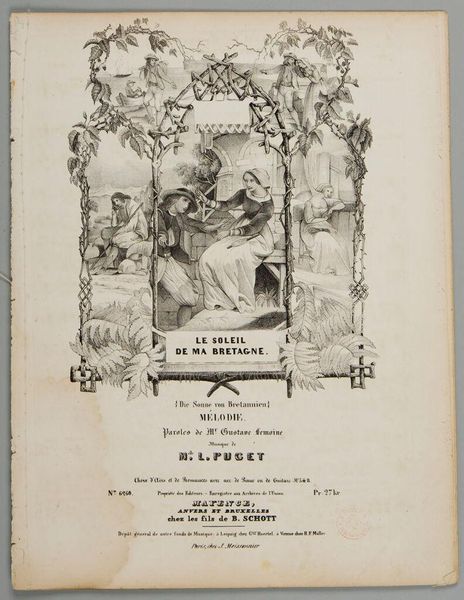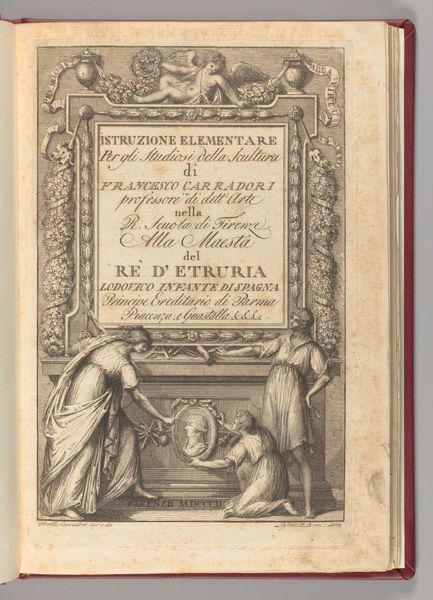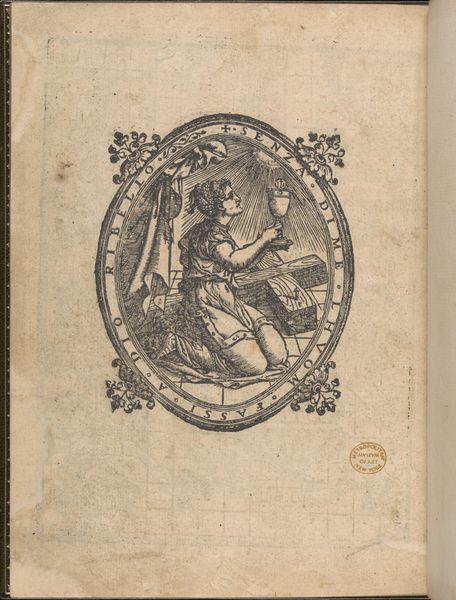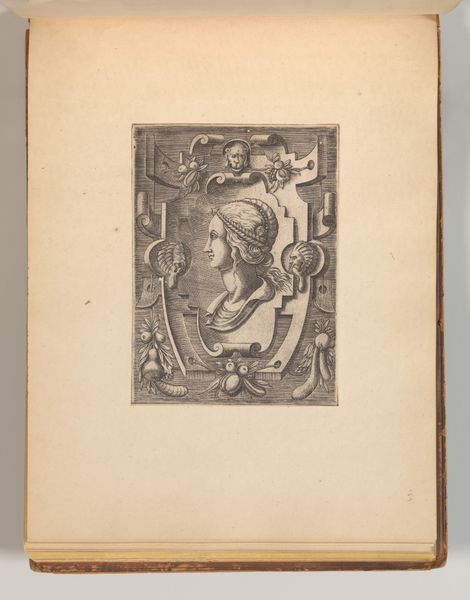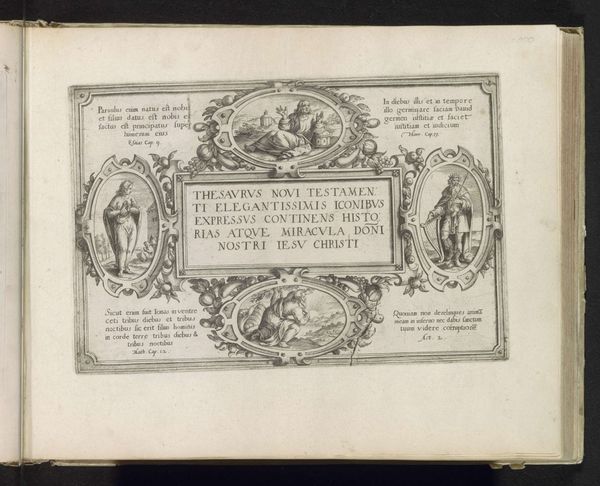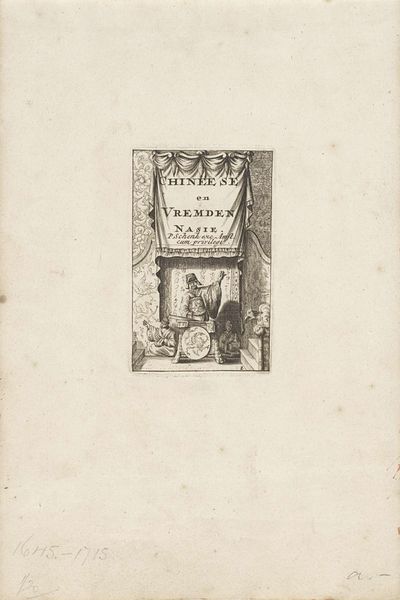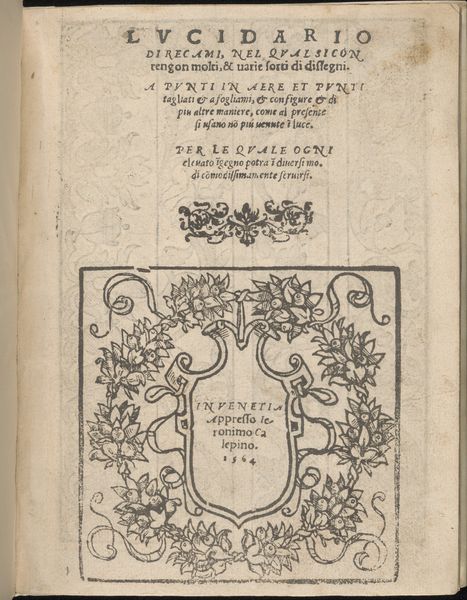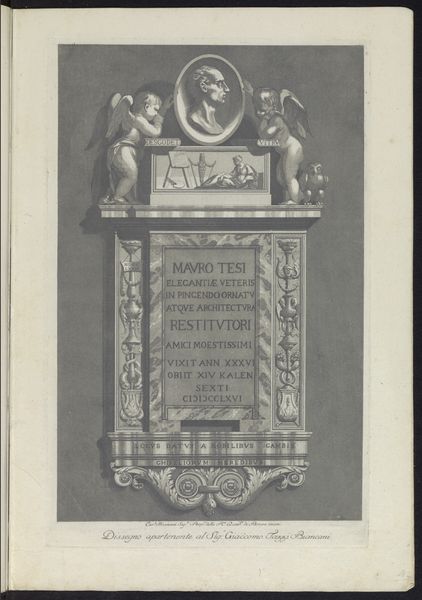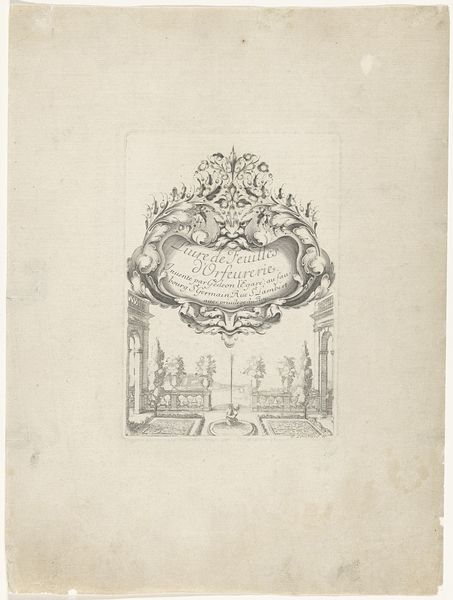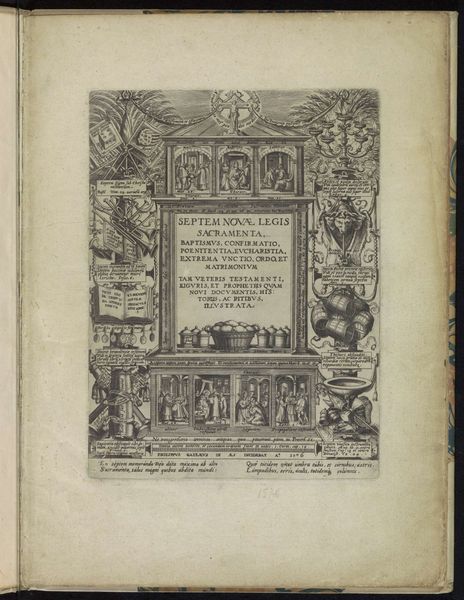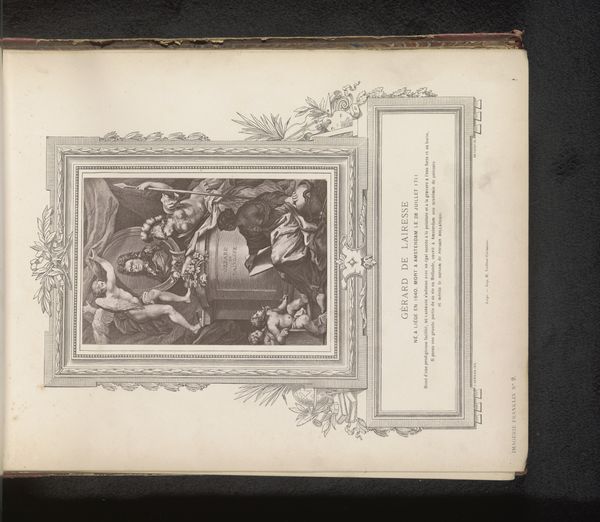
drawing, graphic-art, print, paper, engraving
#
drawing
#
graphic-art
#
neoclassicism
# print
#
paper
#
history-painting
#
academic-art
#
engraving
#
watercolor
Dimensions: height 417 mm, width 278 mm
Copyright: Rijks Museum: Open Domain
Editor: This engraving by Michel Liénard, dating back to around 1866, is titled "Rechthoekige cartouche tussen trofeeën, dieren en bladranken," which translates to "Rectangular cartouche between trophies, animals, and foliage." It feels incredibly ornate and almost overwhelming in its detail. What do you see in this piece, with your expertise? Curator: I see a deliberate invocation of the past. The trophies, the idealized figures, the very structure of the cartouche, all speak to a deep reverence for classical antiquity, don't you think? It's as if Liénard is attempting to capture the weight and authority of past empires. Look at the inclusion of heraldic elements -- they suggest lineage, power and perhaps a longing for a more ordered, hierarchical world. The wolf symbol really stands out; were you also immediately drawn to its inclusion and placement? Editor: Yes, definitely! The wolf looks so fierce in contrast to the cherubic figures above. Why do you think the artist included that animal? Curator: Wolves carry a duality; symbols of both wildness and guardianship. It may represent the untamed spirit alongside a promise of protection. Consider, too, the "trophies"—collections of weaponry, musical instruments and animal figures. How might these serve as indicators of power and cultural sophistication, subtly referencing different aspects of human achievement? Editor: It's fascinating how a single image can hold so many layers of meaning! I hadn’t considered the wolf in terms of guardianship. Curator: Exactly! By understanding the language of symbols, we gain insight into the cultural values and aspirations embedded within the work. Ultimately, Liénard presents a romanticized view of history, where power and culture are inextricably linked through symbolic representation. It certainly encourages consideration about what our contemporary symbols truly mean and what they’re destined to inherit from cultural memory. Editor: I'll definitely look at neoclassical works with a fresh perspective from now on!
Comments
No comments
Be the first to comment and join the conversation on the ultimate creative platform.
